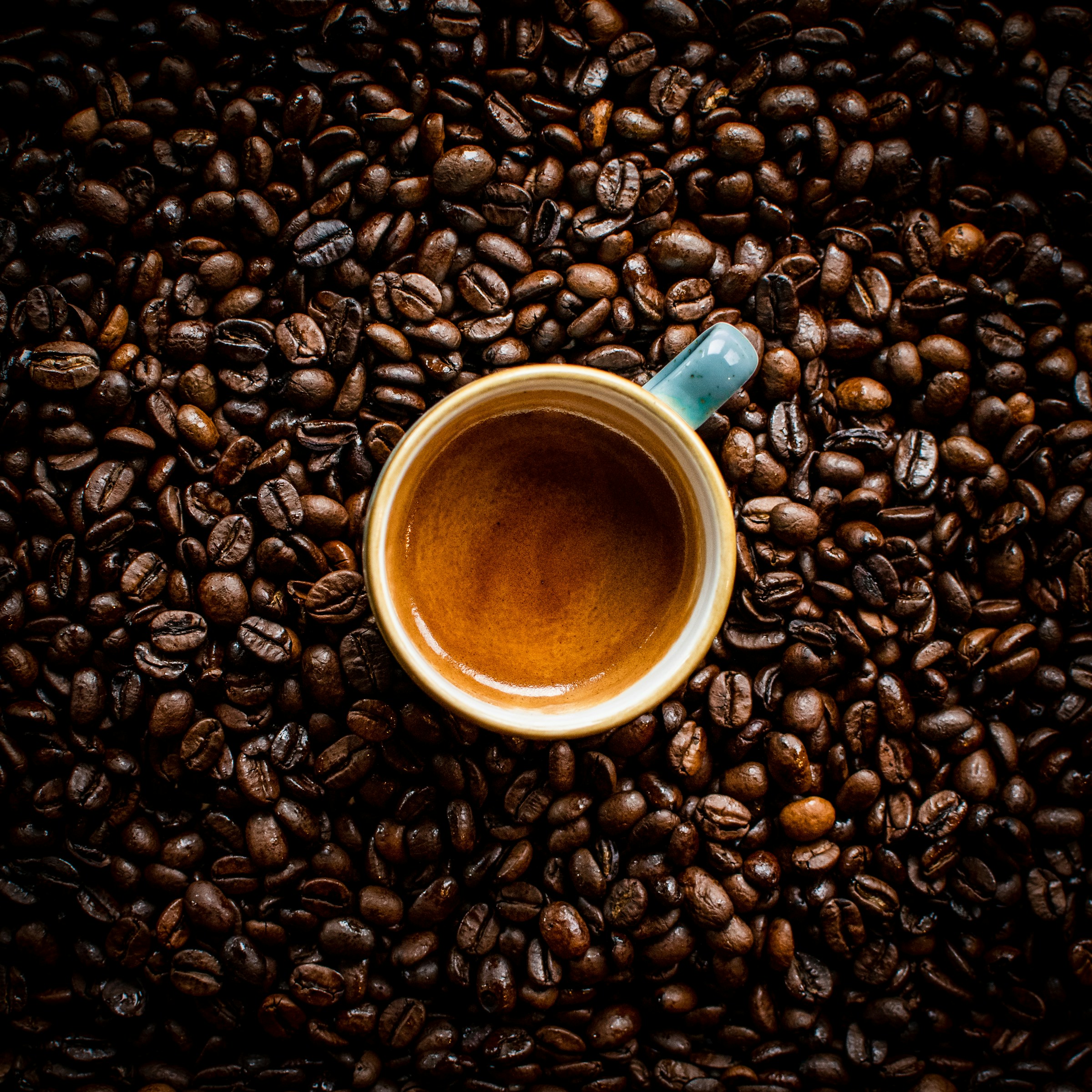Doppio espresso is a staple in the world of coffee.
This powerful double shot packs twice the flavor and caffeine of a regular espresso.
Understanding doppio espresso can enhance your coffee experience, whether you’re a casual drinker or a connoisseur.
Knowing how it’s made and what sets it apart from other coffee drinks will deepen your appreciation for this rich and intense beverage.
Let’s look at doppio espresso in more depth and see why it’s a favorite among coffee lovers everywhere.
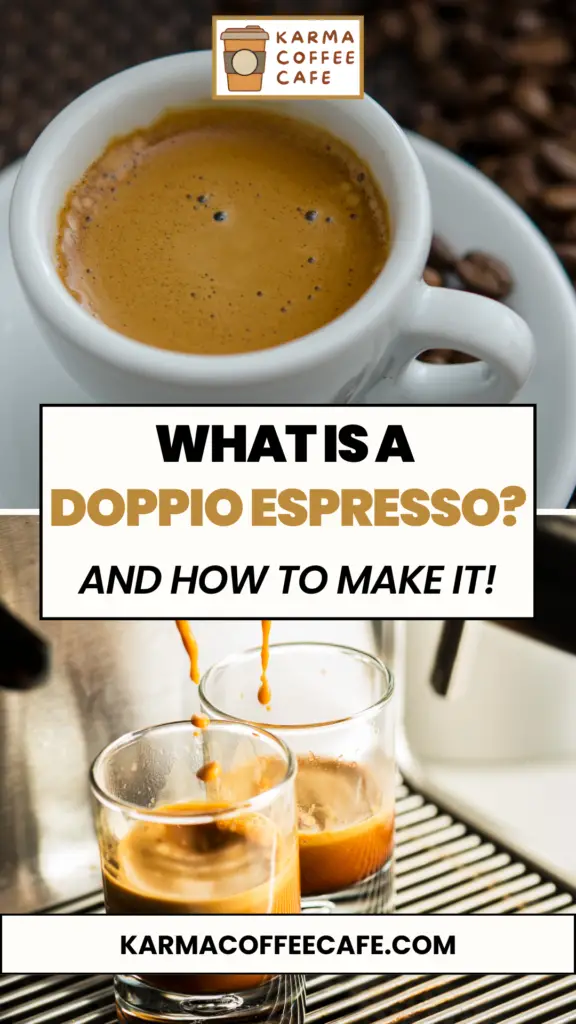
Key Takeaways
- A doppio espresso is a double shot of espresso, using twice the amount of coffee grounds.
- The term “doppio” means “double” in Italian, reflecting its origin.
- Doppio espresso is bold, intense, and contains about 126 milligrams of caffeine.
- You can make a doppio with an espresso machine, Moka pot, AeroPress, or French press.
- Ideal brewing temperature is 195-199°F (91-93°C) for medium roast and 190-195°F (88-91°C) for dark roast, with a brew time of 25-30 seconds.
- Popular coffee chains and independent cafes offer doppio espresso.
- Variations include iced doppio, doppio con panna (with whipped cream), and solo con panna (single shot with whipped cream).
- Common misconceptions include thinking doppio is always bitter or only for espresso machines.
- A doppio is typically served without milk, but can be customized to taste.
What is a Doppio Espresso?

A doppio espresso is simply a double shot of espresso.
The word “doppio” means “double” in Italian, indicating the doubled amount of coffee used.
This results in a stronger, more intense coffee experience compared to a single shot.
The origin of the doppio espresso can be traced back to Italy, where espresso culture is deeply rooted.
In Italian coffee culture, espresso is enjoyed throughout the day, often as a quick, intense burst of flavor and energy.
The doppio espresso emerged as a way to provide an even more robust coffee experience, catering to those who needed an extra kick.
Understanding the meaning of “doppio” helps clarify why this coffee variation is unique.
It’s not just about more coffee; it’s about intensifying the entire espresso experience.
By doubling the coffee grounds, a doppio espresso delivers a richer, fuller taste, along with a higher caffeine content.
Composition and Taste
As mentioned earlier, a doppio espresso consists of two shots of espresso.
To make it, you double the amount of coffee used for a single shot.
Typically, this means using 14-20 grams of finely ground coffee.
The result is a 60ml (2 ounces) serving of espresso extracted in about 25-30 seconds.
The flavor profile of a doppio espresso is more intense than a regular espresso.
It’s bold and robust, with a slightly bitter edge.
The taste can vary depending on the coffee beans used, but it generally offers a full-bodied experience.
Darker roasts tend to give a richer, deeper flavor, while lighter roasts can add a touch of sweetness.
The aroma of a doppio espresso is rich and fragrant.
It’s one of the first things you’ll notice when you take a sip.
This enticing smell sets the stage for the powerful taste to follow.
The mouthfeel is velvety and smooth, adding to the overall enjoyment of the drink.
The Origin and History of Doppio Espresso
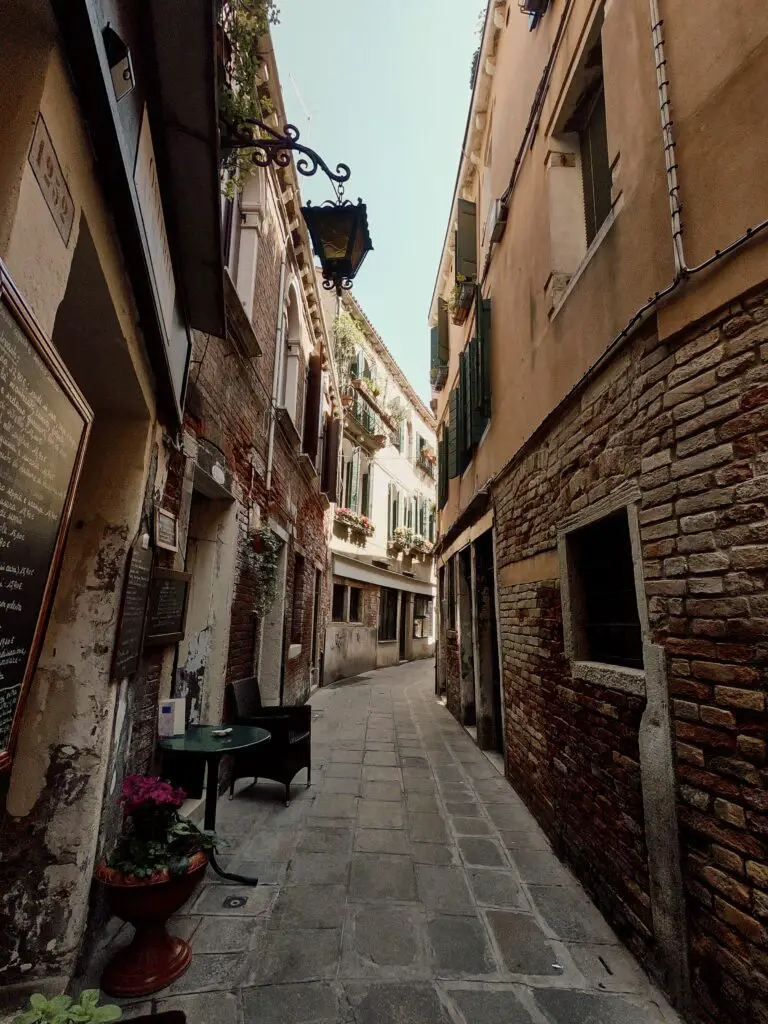
The doppio espresso has its roots in Italy, a country renowned for its rich coffee culture.
Italians have been enjoying espresso since the early 20th century, with the first steam-powered coffee beverage maker patented in Turin by Angelo Moriondo in 1884.
By 1903, espresso machines were being mass-produced in Milan, solidifying espresso’s place in Italian life.
The term “doppio” means “double” in Italian, perfectly describing this coffee’s essence.
It represents a double shot of espresso, using twice the amount of coffee grounds for a stronger, more intense brew.
The doppio espresso emerged as a way to cater to those needing a more robust coffee experience, quickly becoming a staple in Italian cafés.
Doppio espresso’s popularity didn’t stay confined to Italy.
As coffee culture spread globally, so did the appreciation for this powerful drink.
Major coffee chains like Starbucks popularized the term “doppio,” introducing it to a broader audience.
Today, you can find doppio espresso on menus in cafés around the world, enjoyed by those who crave a stronger kick from their coffee.
How to Make a Doppio Espresso
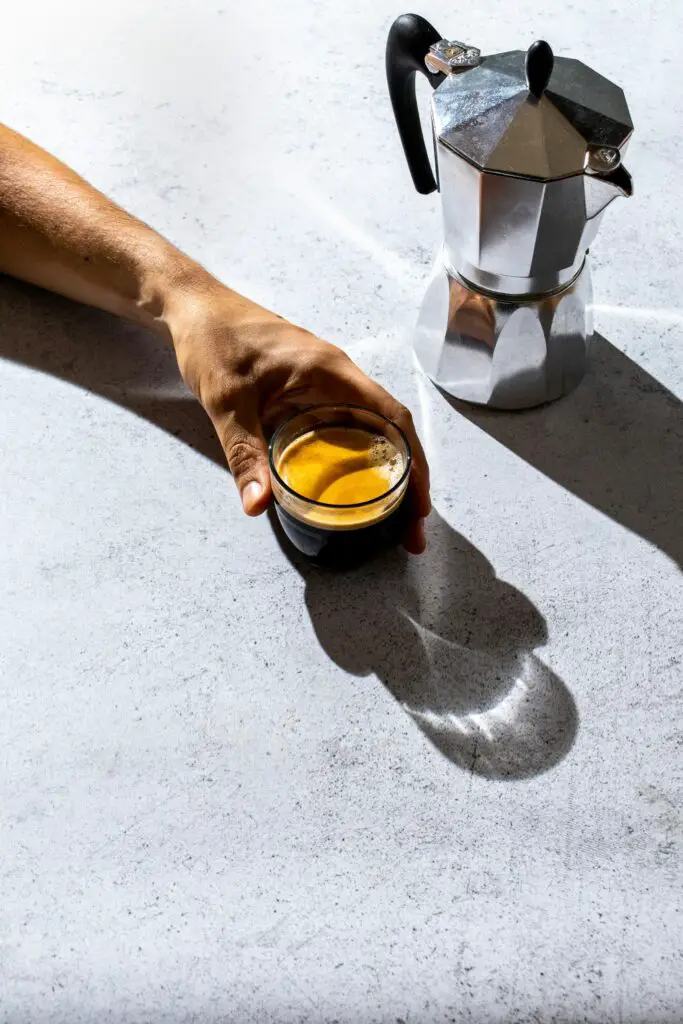
Equipment Needed
To make a doppio espresso, you’ll need the following equipment:
- Espresso Machine: A quality espresso machine is essential for making a perfect doppio.
- Grinder: A burr grinder helps achieve the fine grind needed for espresso.
- Portafilter: This holds the coffee grounds during brewing.
Step-by-Step Guide
Step 1: Grinding the Coffee Beans
Start by grinding your coffee beans to a fine consistency.
Use 14-20 grams of coffee for a doppio espresso.
A burr grinder ensures a uniform grind size, which is crucial for proper extraction.
Step 2: Tamping the Coffee
Next, place the finely ground coffee into the portafilter.
Use a tamper to press the coffee down evenly.
This step is important as it ensures that water flows through the coffee evenly during extraction.
Apply firm, even pressure while tamping.
Step 3: Pulling the Shot
Attach the portafilter to the espresso machine.
Start the machine and begin the extraction process.
You should aim to extract about 60ml (2 ounces) of espresso in 25-30 seconds.
Step 4: Ideal Brewing Time and Temperature
The ideal brewing temperature for a doppio espresso is between 195-199°F (91-93°C) for medium roast and 190-195°F (88-91°C) for dark roast.
Maintaining this temperature range helps to extract the best flavors from the coffee.
Brewing Tips for the Perfect Doppio

Ideal Grind Size
The grind size is crucial for making a great doppio espresso.
Use a fine grind, similar to table salt.
This allows for proper extraction, ensuring that the water passes through the coffee grounds at the right speed, extracting all the flavors without over or under-extracting.
Water Temperature
Maintaining the correct water temperature is essential.
As mentioned ealierer, for a medium roast, aim for 195-199°F (91-93°C).
For a dark roast, use a slightly lower temperature range of 190-195°F (88-91°C).
Consistent temperature helps extract the best flavors from the coffee beans.
Brew Time
The ideal brew time for a doppio espresso is between 25-30 seconds.
This time frame ensures a balanced extraction, providing a rich and intense flavor.
If the brew time is too short, the coffee may taste weak.
If it’s too long, the coffee can become overly bitter.
Nutritional Information
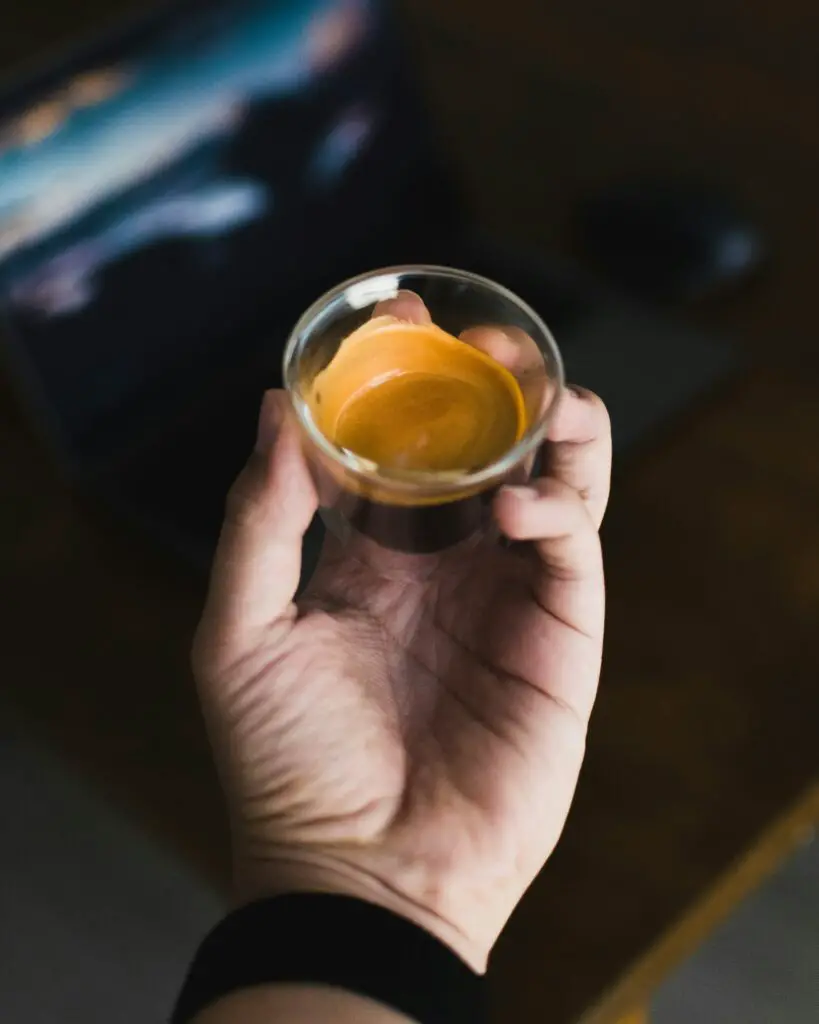
Calorie Count
A standard doppio espresso is a low-calorie beverage, making it a popular choice for those watching their calorie intake.
Each serving contains approximately 5-10 calories.
This minimal calorie count is due to the fact that espresso is simply brewed coffee without added milk, sugar, or flavorings.
If you choose to add extras like whipped cream or sweeteners, the calorie count will increase accordingly.
Caffeine Content
A doppio espresso packs a significant caffeine punch, containing roughly 126 milligrams of caffeine.
This is double the amount found in a single shot of espresso, which typically has around 63 milligrams.
The high caffeine content is part of what makes doppio espresso a favorite among coffee enthusiasts looking for a strong, energizing drink.
Alternative Methods for Making Doppio at Home
Using a Moka Pot
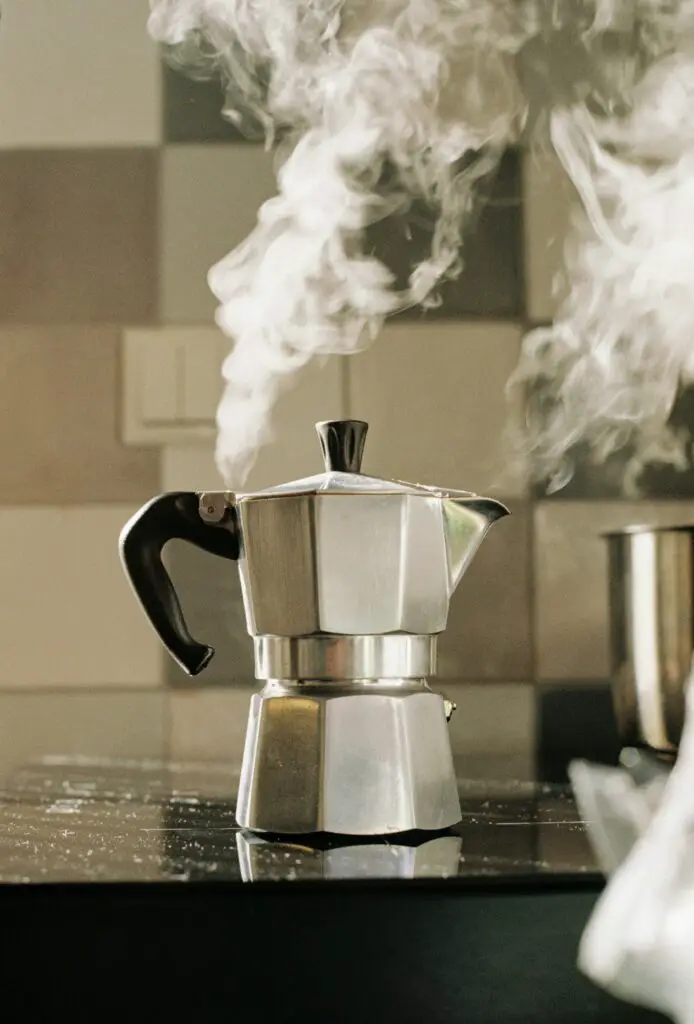
A Moka pot is a popular alternative for making espresso-style coffee at home.
To make a doppio, fill the bottom chamber with water up to the safety valve.
Add finely ground coffee to the filter basket, leveling it off without pressing down.
Assemble the Moka pot and place it on medium heat.
As the water heats, it will create pressure, pushing the water through the coffee grounds and into the top chamber.
The result is a strong, rich coffee similar to a doppio espresso.
AeroPress Method
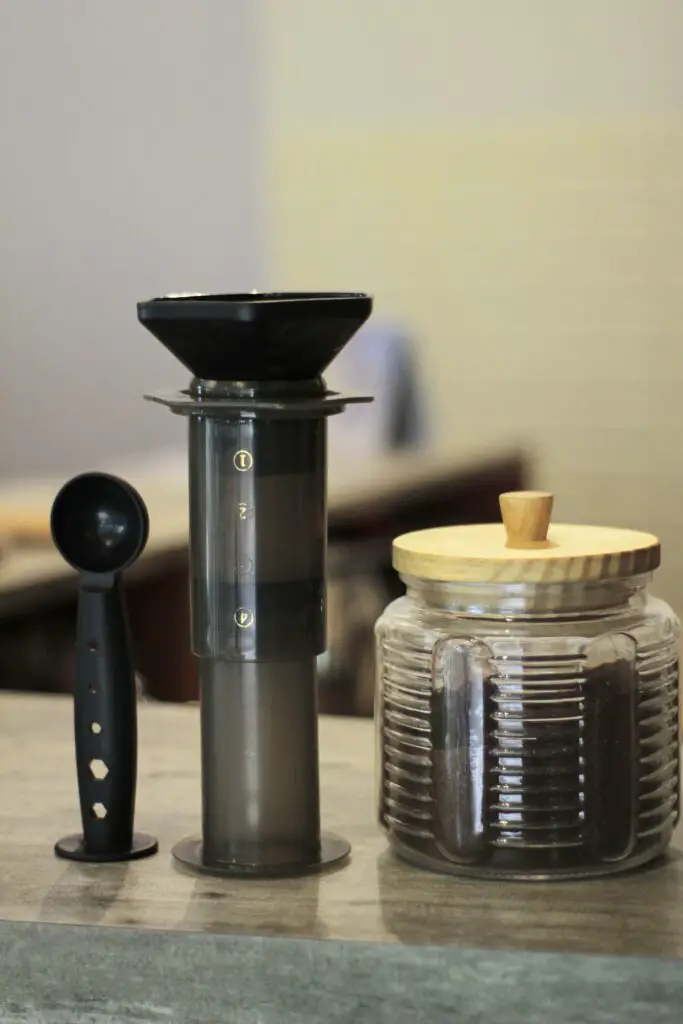
The AeroPress offers another way to make a doppio at home.
Start by placing a paper filter in the AeroPress cap and rinsing it with hot water.
Assemble the AeroPress and add 14-20 grams of finely ground coffee.
Pour hot water (around 200°F) over the coffee grounds up to the marked level.
Stir the mixture for about 10 seconds, then insert the plunger and press down slowly until you hear a hissing sound.
This method yields a concentrated coffee that mimics the intensity of a doppio espresso.
French Press Technique
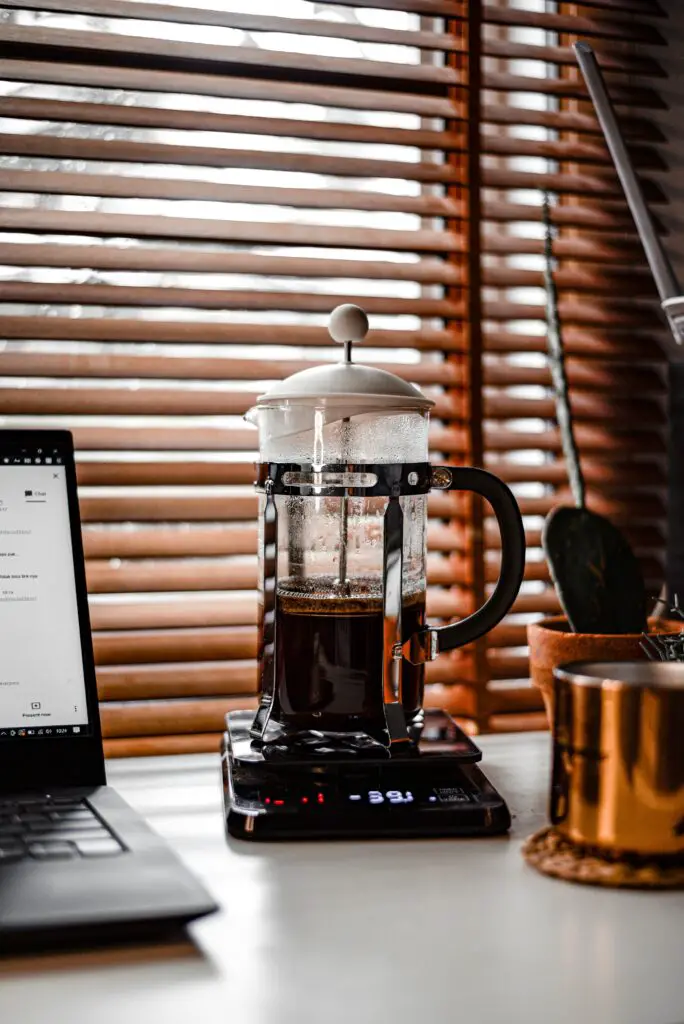
While the French press is typically used for coarser grinds and longer brewing times, you can adapt it for a doppio-like coffee.
Use a finer grind than usual, similar to that for an espresso.
Add 14-20 grams of coffee to the French press and pour in 60ml of water heated to 195-200°F.
Stir the mixture and let it steep for about 3-4 minutes.
Press the plunger down slowly and pour the coffee into a cup.
This method produces a strong, full-bodied coffee, though not as concentrated as a true doppio.
Doppio Espresso vs. Other Coffee Drinks
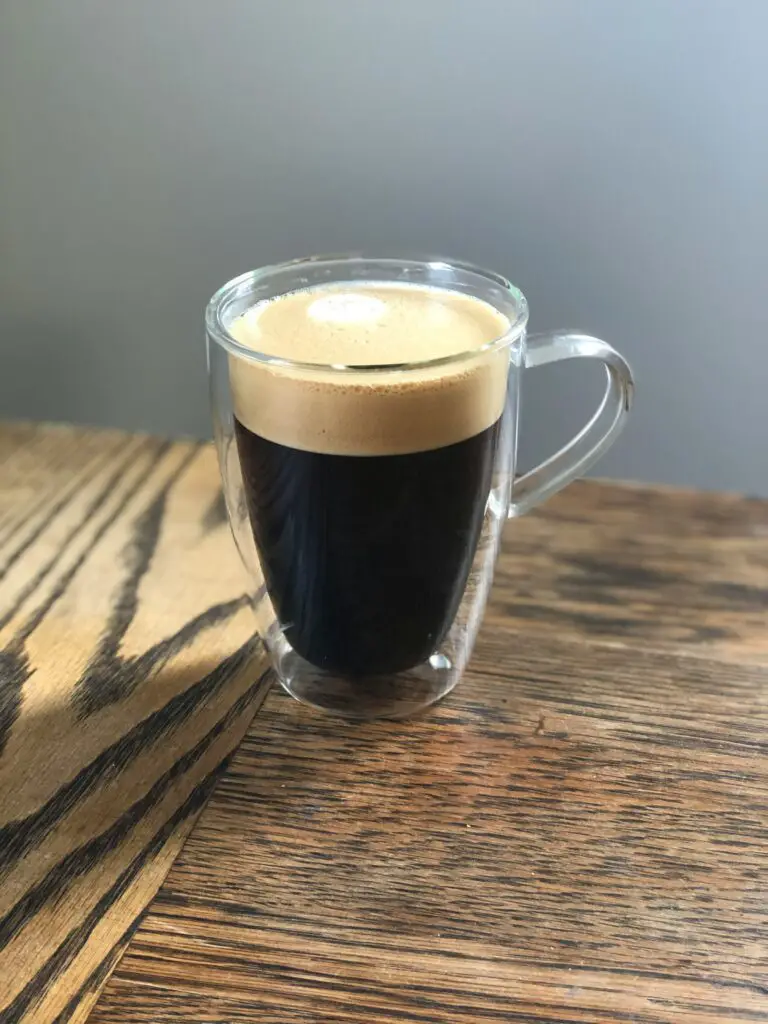
Doppio vs. Solo Espresso
The main difference between a doppio and a solo espresso lies in the serving size and preparation.
A solo espresso, also known as a single shot, uses about 7-9 grams of coffee to produce roughly 30ml of espresso.
In contrast, a doppio, or double espresso, uses double the amount of coffee, about 14-18 grams, resulting in a 60ml shot.
While both share the same rich flavor profile, a doppio offers a more intense coffee experience due to its larger volume.
Doppio vs. Long Espresso
When comparing a doppio to a long espresso, the key differences are in taste and brewing time.
A long espresso, or lungo, uses the same amount of coffee as a solo espresso but is brewed with more water, resulting in a larger, less concentrated drink.
The lungo has a milder flavor and more volume than a doppio.
The longer extraction time of a lungo also affects the taste, bringing out more bitter notes compared to the intense and robust flavor of a doppio.
Doppio vs. Ristretto
A ristretto is a more concentrated version of an espresso, using the same amount of coffee but half the water, yielding about 15-20ml.
The shorter extraction time results in a bolder and sweeter flavor, with less bitterness.
In contrast, a doppio offers a balanced and robust taste with a higher volume.
While both are intense, a ristretto packs a punch with a smaller serving, whereas a doppio provides a fuller coffee experience.
Doppio vs. Americano
An Americano is made by adding hot water to a solo or doppio espresso, diluting its intensity.
This method maintains the espresso’s flavor profile but with a less concentrated taste and larger volume.
The Americano is smoother and lighter compared to the strong, full-bodied doppio.
By adding water, the coffee experience changes significantly, making an Americano a more approachable option for those who prefer milder coffee.
Where Can You Order a Doppio Espresso?

Popular Coffee Chains
You can find doppio espresso at many popular coffee chains.
Starbucks, for example, has made the term “doppio” widely known outside of Italy.
Ordering a doppio at Starbucks will get you a strong, double shot of espresso, perfect for a caffeine boost.
Dunkin’ Donuts also offers doppio espresso on their menu, providing a quick and convenient option for coffee lovers.
Other major chains like Dutch Bros and McDonald’s serve doppio espresso, making it accessible no matter where you are.
Independent Cafes
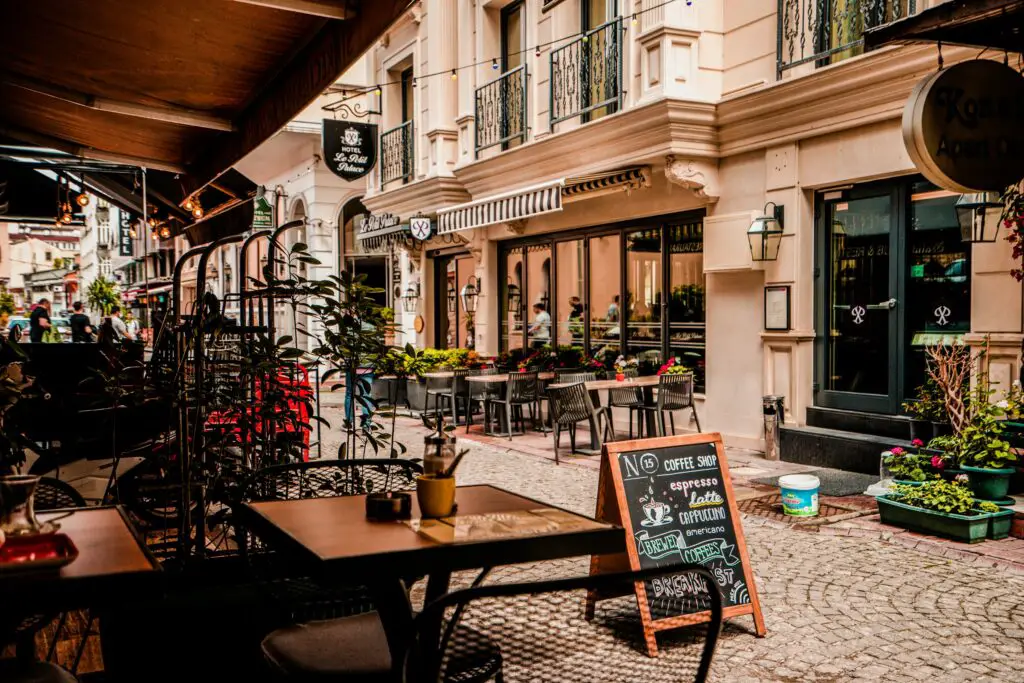
Independent cafes are another great place to enjoy a doppio espresso.
These smaller establishments often pride themselves on their coffee quality and barista skills.
When you order a doppio at an independent café, you’re likely to get a carefully crafted espresso shot made with high-quality beans.
These cafes can also offer unique and personalized coffee experiences, as baristas may have their own methods and recommendations for enjoying a doppio espresso.
How to Order and Drink a Doppio
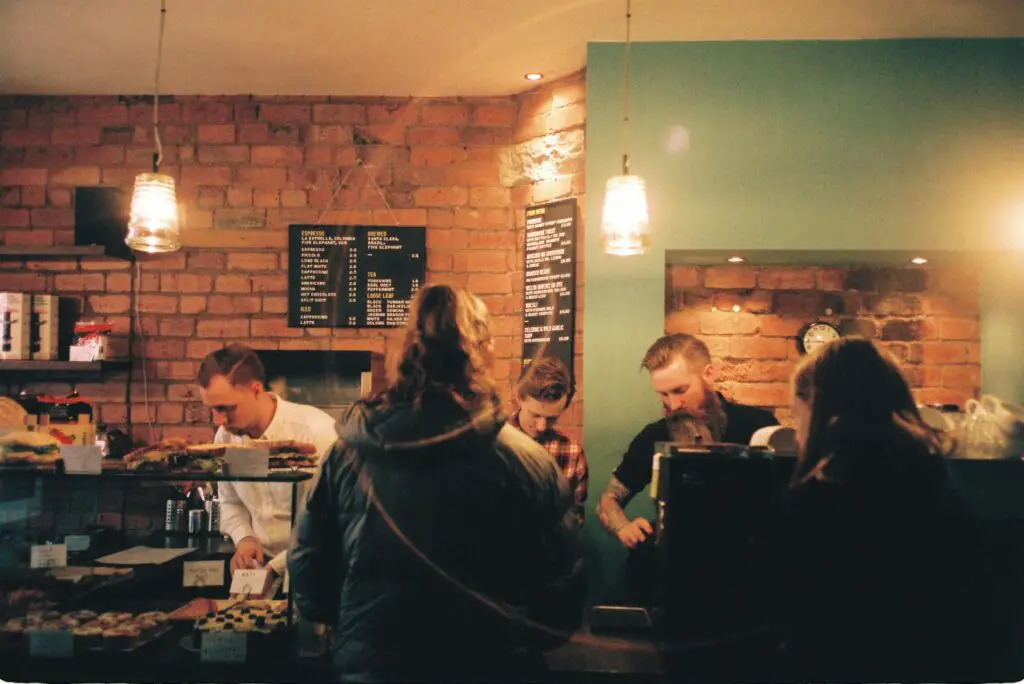
Tips for Ordering in a Café
When you’re at a café, ordering a doppio espresso is straightforward.
Simply ask for a “doppio” or “double espresso.”
If the barista seems unsure, you can clarify that you want two shots of espresso.
It’s also helpful to mention if you have any preferences for the type of beans or roast level, as this can affect the flavor of your doppio.
Proper Way to Drink and Enjoy a Doppio
Drinking a doppio espresso is an experience to savor.
Start by taking a moment to appreciate the rich aroma.
This sets the stage for the intense flavors you’re about to enjoy.
Take small sips to fully experience the bold and robust taste.
Drinking it too quickly can overwhelm your palate.
Enjoying a doppio slowly allows you to appreciate its full-bodied, velvety mouthfeel.
Common Accompaniments
It’s common to see a doppio served with a small glass of sparkling water.
This is used to cleanse your palate before and after drinking the espresso, enhancing the flavors.
You might also find a sugar cube or packet offered on the side.
While traditionalists enjoy their doppio without sugar, adding a touch of sweetness is perfectly acceptable if it suits your taste.
Variations of Doppio Espresso
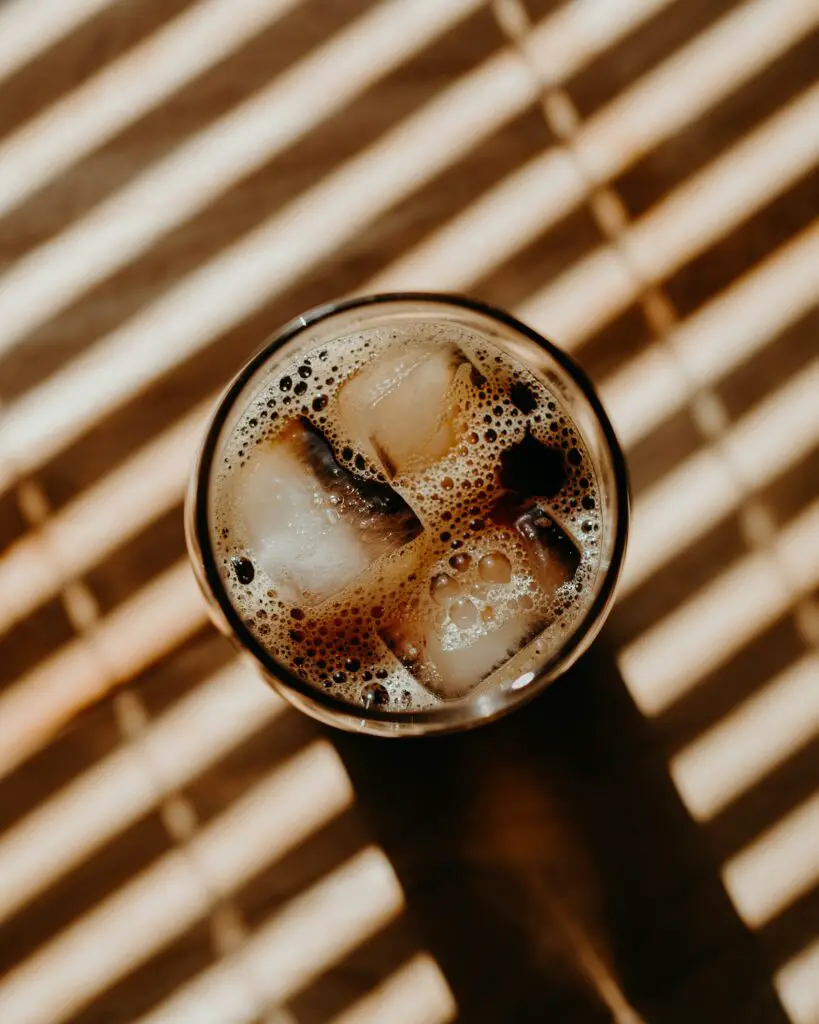
Iced Doppio Espresso
An iced doppio espresso is perfect for hot days when you still crave that strong coffee kick.
To prepare it, brew a doppio espresso as usual and pour it over a glass filled with ice.
The rapid cooling changes the flavor profile slightly, making it a refreshing, yet intense, coffee experience.
You can add a splash of cold water or milk to dilute it a bit if the flavor is too strong for your taste.
Doppio Con Panna
The doppio con panna is a luxurious variation of the doppio espresso.
It consists of a doppio topped with a generous dollop of whipped cream.
The whipped cream adds a rich, creamy texture that balances the bold flavors of the espresso.
This variation is perfect for those who enjoy a touch of sweetness and indulgence in their coffee.
Solo Con Panna
The solo con panna is similar to the doppio con panna but uses a single shot of espresso instead of a double.
This single shot is topped with whipped cream, creating a delightful treat.
It’s a great option if you want the richness of espresso and cream but prefer a less intense coffee experience.
Common Misconceptions About Doppio Espresso
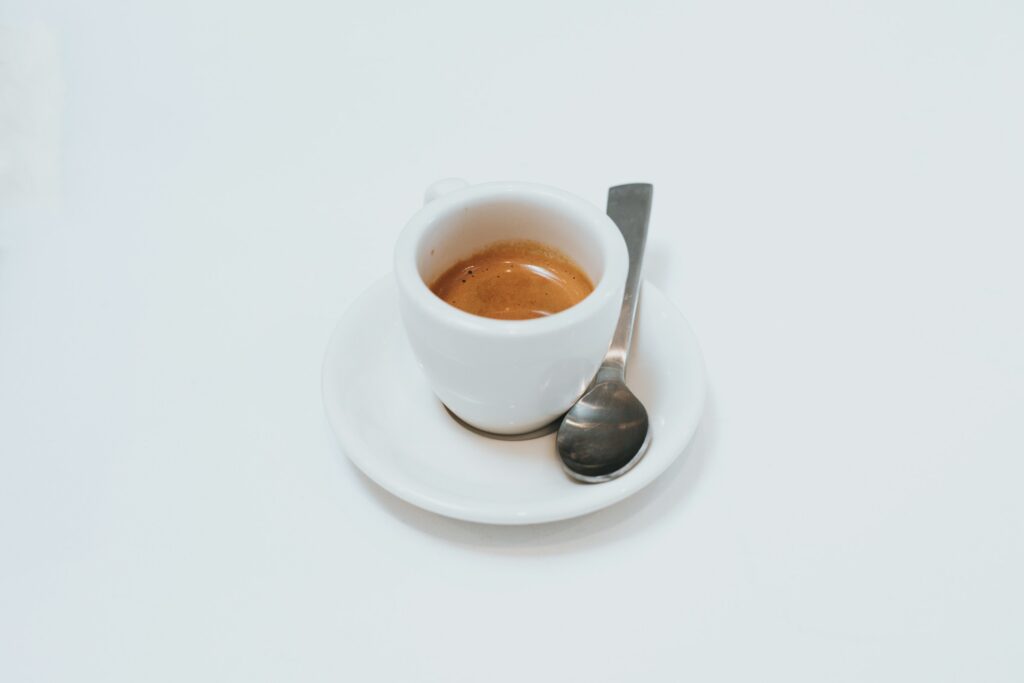
There are several common misconceptions about doppio espresso that can lead to confusion.
Let’s clarify these myths to help you better understand and enjoy this robust coffee drink.
One myth is that a doppio espresso is simply a stronger version of a single shot of espresso.
In reality, a doppio uses twice the amount of coffee grounds, resulting in a double shot that maintains the same strength but offers more volume and intensity.
Another misunderstanding is that a doppio is always bitter.
While it does have a bold and intense flavor, the bitterness depends largely on the type of coffee beans used and the brewing process.
High-quality beans and proper extraction can yield a rich, balanced flavor without excessive bitterness.
Some people think that a doppio espresso contains more calories than a single shot.
However, the calorie count remains low at around 5-10 calories, regardless of the size.
Additional calories only come from extras like milk, sugar, or flavorings.
Another common myth is that you need a high-end espresso machine to make a good doppio.
While an espresso machine is ideal, you can also use alternative methods like a Moka pot, AeroPress, or French press to achieve a similar result.
Lastly, some believe that a doppio espresso is too strong to enjoy without adding milk or sugar.
This isn’t true for everyone.
Many coffee lovers appreciate the pure, unadulterated taste of a doppio. It’s all about personal preference and finding what suits your taste.
Conclusion
A doppio espresso is a double shot of intense, flavorful coffee.
It originated in Italy and has become a favorite worldwide.
Making a doppio involves using twice the coffee grounds, resulting in a rich and bold taste.
You can enjoy it hot, iced, or with a touch of whipped cream.
Despite common misconceptions, it’s easy to make at home and remains low in calories.
If you’re a coffee lover looking for a stronger kick, give doppio espresso a try.
Whether you order it at your favorite café or make it yourself, it’s sure to enhance your coffee experience.
Frequently Asked Questions (FAQs)
What is the difference between doppio and double espresso?
There is no difference between a doppio and a double espresso.
Both terms refer to a double shot of espresso, using twice the amount of coffee grounds for a stronger, more intense flavor.
How much caffeine is in a doppio espresso?
A doppio espresso contains approximately 126 milligrams of caffeine, double the amount found in a single shot of espresso.
Can you make doppio without an espresso machine?
Yes, you can make a doppio without an espresso machine using alternative methods like a Moka pot, AeroPress, or French press.
While these methods might not produce a true espresso, they can create a similar, strong coffee experience.
What are the ideal brewing parameters for a doppio coffee?
The ideal brewing temperature for a doppio espresso is between 195-199°F (91-93°C) for medium roast and 190-195°F (88-91°C) for dark roast.
The optimal brew time is 25-30 seconds.
What type of coffee beans should I use for a doppio coffee?
For a doppio espresso, darker roasts are recommended as they provide a richer, bolder flavor.
However, you can experiment with different beans to find your preferred taste.
How does doppio taste compared to other espresso drinks?
A doppio espresso has a stronger, more intense flavor compared to a single shot of espresso.
It is bold and robust, with a slightly bitter edge.
The taste can vary based on the coffee beans used.
How much milk is in a doppio espresso?
A doppio espresso is typically served without any milk.
If you prefer, you can add milk to your taste, but traditionally, a doppio is enjoyed as a pure, strong coffee shot.


